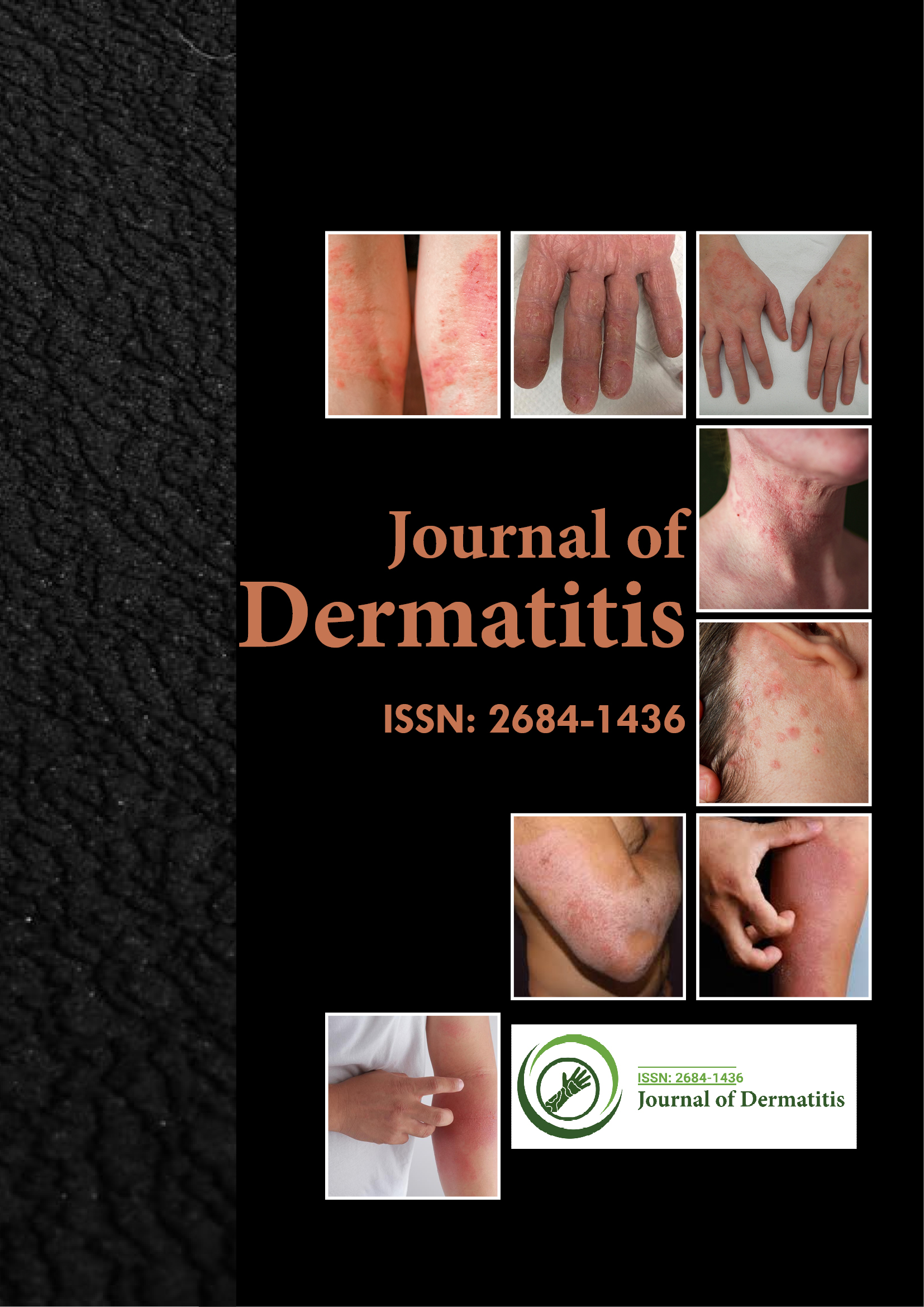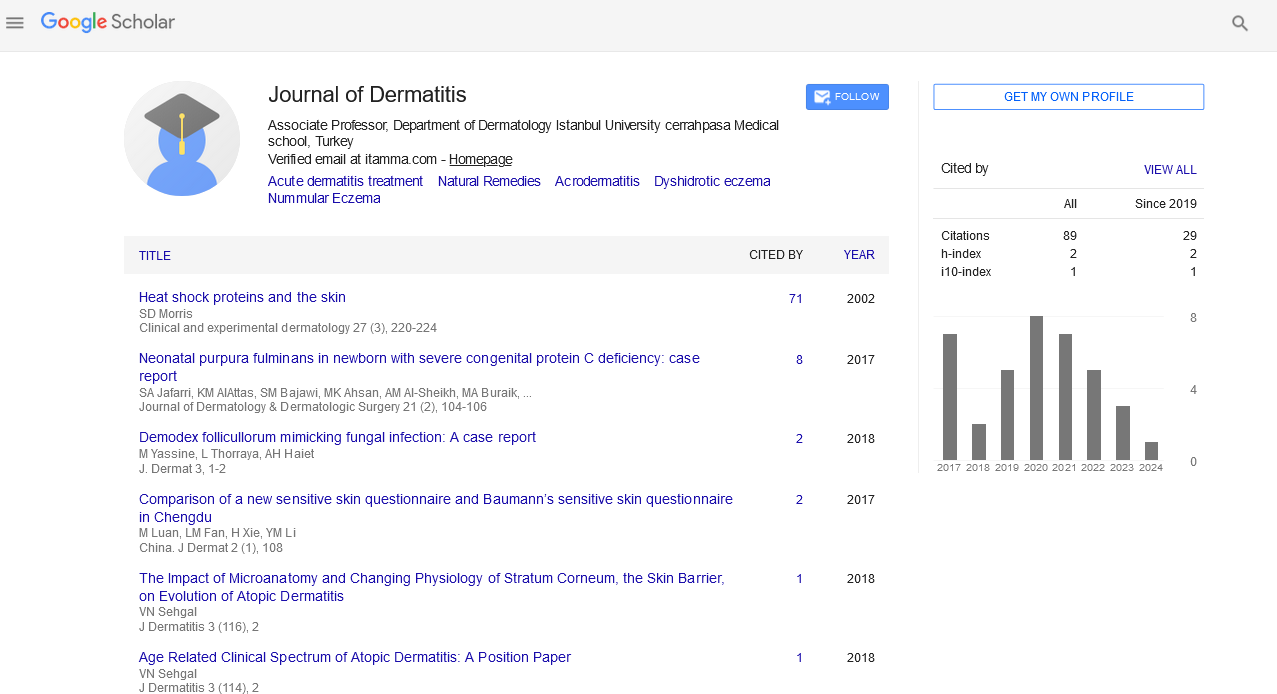Indexed In
- RefSeek
- Hamdard University
- EBSCO A-Z
- Euro Pub
- Google Scholar
Useful Links
Share This Page
Journal Flyer

Open Access Journals
- Agri and Aquaculture
- Biochemistry
- Bioinformatics & Systems Biology
- Business & Management
- Chemistry
- Clinical Sciences
- Engineering
- Food & Nutrition
- General Science
- Genetics & Molecular Biology
- Immunology & Microbiology
- Medical Sciences
- Neuroscience & Psychology
- Nursing & Health Care
- Pharmaceutical Sciences
Commentary - (2023) Volume 8, Issue 3
Overview of the Manifestations and Distinctive forms of Pachyonychia Congenita
Basset Hovnanian*Received: 29-Mar-2023, Manuscript No. JOD-23-21138; Editor assigned: 31-Mar-2023, Pre QC No. JOD-23-21138 (PQ); Reviewed: 21-Apr-2023, QC No. JOD-23-21138; Revised: 28-Apr-2023, Manuscript No. JOD-23-21138 (R); Published: 05-May-2023, DOI: 10.35248/2684-1436.23.8.201
Description
Pachyonychia Congenita (PC) is a rare genetic disorder that affects the development of the nails and skin. It is caused by mutations in one of five keratin genes, which encode for proteins that are important for the structure and function of skin, hair, and nails. The disorder is inherited in an autosomal dominant manner, which means that a person only needs to inherit one copy of the mutated gene to develop the condition.
Two main types of PC that is PC-1 and PC-2. PC-1 is caused by mutations in the KRT6A, KRT6B, KRT16, or KRT17 genes, while PC-2 is caused by mutations in the KRT6C gene. The symptoms of PC can vary depending on the type and severity of the mutation.
One of the hallmark symptoms of PC is thickened nails, known as pachyonychia. The nails may be discolored, brittle, and prone to cracking or breaking. In severe cases, the nails may become so thick that they interfere with normal hand function. Pachyonychia can also affect the toenails, and in some cases, the nails may be completely absent.
In addition to nail abnormalities, PC can also affect the skin. People with PC may develop painful blisters and calluses on the soles of their feet and palms of their hands. These blisters can be triggered by friction or pressure, and may become infected. The skin on the feet and hands may also become thickened, red, and inflamed.
Other symptoms of PC can include thickened and rough skin on the elbows and knees, and in some cases, thickened skin on the scalp. Some people with PC may also have dental problems, such as abnormally shaped teeth or delayed tooth eruption.
There is currently no cure for PC, and treatment is aimed at managing the symptoms. People with PC may benefit from regular visits with a dermatologist, who can monitor their skin and nail health, and prescribe topical treatments to help reduce pain and inflammation. In severe cases, surgery may be necessary to remove painful calluses or to reshape the nails.
Living with PC can be challenging, both physically and emotionally. The condition can be painful and debilitating, and people with PC may struggle with feelings of isolation and frustration. However, there are support groups and online communities for people with PC and their families, which can provide a sense of connection and support.
Genetic counseling is also an important part of managing PC. People with PC may want to consider genetic testing to determine the specific gene mutation responsible for their condition. This information can help inform family planning decisions and allow for early detection and treatment of PC in future generations.
In conclusion, Pachyonychia Congenita (PC) is caused by mutations in keratin genes, which play a vital role in the structure and function of the skin, hair, and nails. PC is inherited in an autosomal dominant manner, and there are two main types: PC-1 and PC-2, each caused by mutations in different genes.
The hallmark symptom of PC is pachyonychia, characterized by thickened, discoloured, brittle, and sometimes absent nails. PC can also affect the skin, leading to painful blisters, calluses, inflammation, and thickening on the hands and feet. Other symptoms may include rough skin on the elbows and knees, scalp involvement, and dental issues.
Citation: Hovnanian B (2023) Overview of the Manifestations and Distinctive forms of Pachyonychia Congenita. J Dermatitis. 8:201.
Copyright: © 2023 Hovnanian B. This is an open-access article distributed under the terms of the Creative Commons Attribution License, which permits unrestricted use, distribution, and reproduction in any medium, provided the original author and source are credited.

